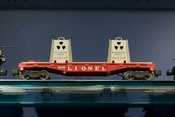Radioactive wastes, must for the protection of mankind be stored or disposed in such a manner that isolation from the biosphere is assured until they have decayed to innocuous levels. If this is not done, the world could face severe physical problems to living species living on this planet.
Some atoms can disintegrate spontaneously. As they do, they emit ionizing radiation. Atoms having this property are called radioactive. By far the greatest number of uses for radioactivity in Canada relate not to the fission, but to the decay of radioactive materials - radioisotopes. These are unstable atoms that emit energy for a period of time that varies with the isotope. During this active period, while the atoms are 'decaying' to a stable state their energies can be used according to the kind of energy they emit.
Since the mid 1900's radioactive wastes have been stored in different manners, but since several years new ways of disposing and storing these wastes have been developed so they may no longer be harmful.
A very advantageous way of storing radioactive wastes is by a process called 'vitrification'.
Vitrification is a semi-continuous process that enables the following operations to be carried out with the same equipment: evaporation of the waste solution mixed with the
------------------------------------------------------------1) borosilicate: any of several salts derived from both boric acid and silicic acid and found in certain minerals such as tourmaline.
additives necesary for the production of borosilicate glass,
calcination and elaboration of the glass. These operations are
carried out in a metallic pot that is heated in an induction
furnace. The vitrification of one load of wastes comprises of the following stages. The first step is 'Feeding'. In this step the vitrification receives a constant flow of mixture of wastes and of additives until it is 80%...


